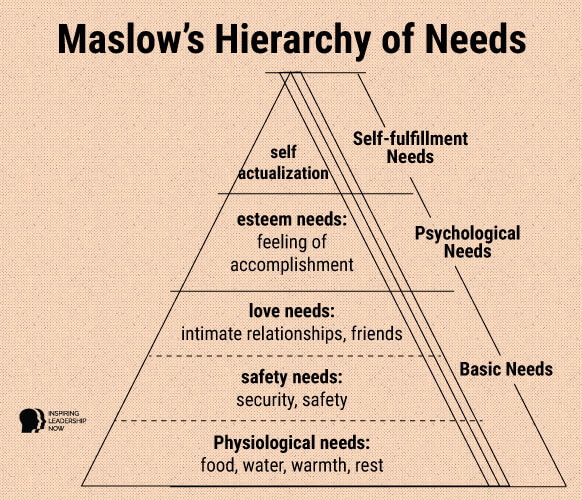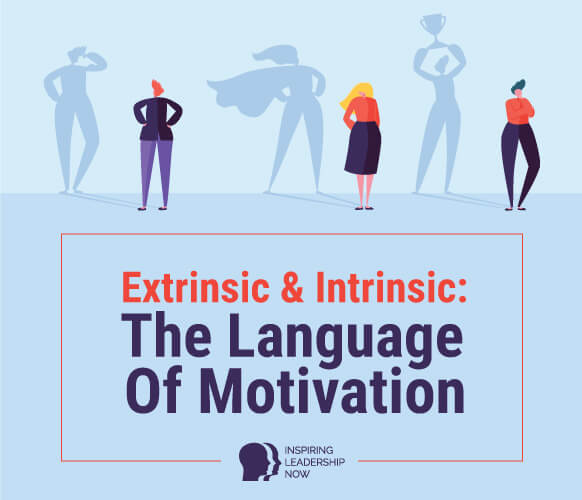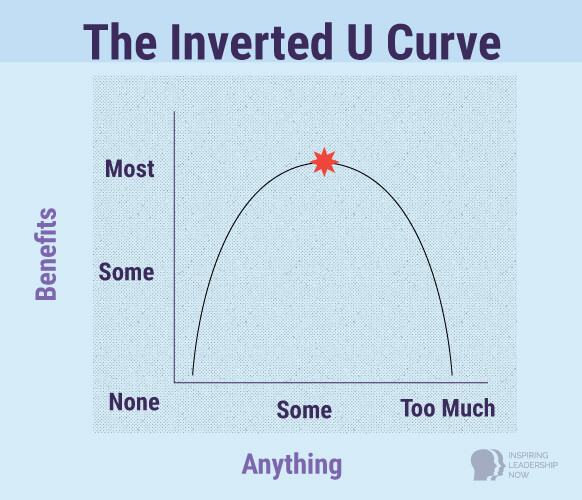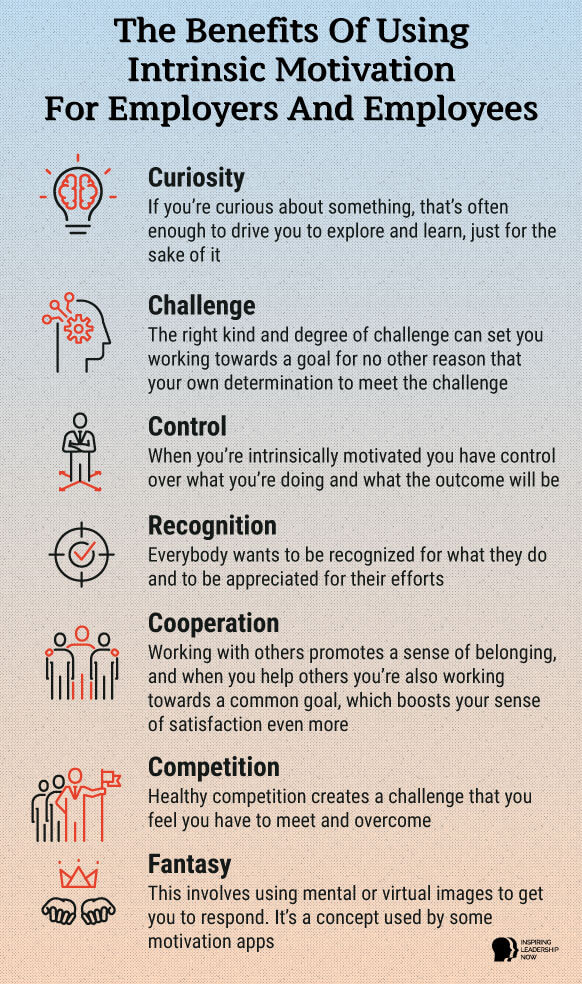Last updated: 10 September 2019

Looking for a fun way to motivate yourself and those you lead? Get your FREE Inspiring Leadership Cards Quote Deck for 49 powerful leadership quotes from history’s greatest leaders and practical action steps you can apply to your career right now. But hurry! Supplies are LIMITED so don’t miss out – grab yours now! (Just cover S+H)
The extrinsic vs. intrinsic motivation debate has only been a recent one. But oh-boy is it long overdue!
Got a brief story for you…
Nearly two centuries ago, Adam Smith (the inventor of the free market) declared that as long as financial incentives are adequate, people will work anywhere because people are inherently lazy – so it doesn’t matter what they do.
It was these exact sentiments that lead to the creation of the assembly line.
But what a lot of people don’t know is that in his book, The Theory of Moral Sentiments, Smith acknowledges that people care about lots of different things – not just their paycheck.
Unfortunately, despite being a very important book, it got a lot less attention and didn’t influence history in the same way as Smith’s other work did.
As such, society has had a false idea about workplace motivation… for over two centuries!
Yep, the paycheck ain’t enough.
So what does motivate people?
Maslow’s Hierarchy Of Needs & Motivators
Remember learning about Maslow’s Hierarchy of Needs in school?

If not… this is a concept developed by psychologist Abraham Maslow to explain motivation by arranging various human needs into a pyramid.
At the base of the pyramid are the most urgent physiological needs such as air, water, food, clothing, shelter, sleep, sex, and finally money, which allows you to purchase the other items when they aren’t readily available or free.
These needs must be met in order for you to progress to the higher levels in the pyramid.
The next level includes safety and security needs, which take in living or working in a stable and secure environment. In the workplace, these needs would include some minimal level of job security, compensation, benefits and decent working conditions.
In the next level of needs come those centered around relationships, including the need for love and belonging, affection and friendship, plus socialization and companionship.
The next higher level of needs relates to esteem, including the need to be recognized, as well as feelings of adequacy and competency, independence and confidence, and the need to be appreciated.
The final and highest level of the pyramid is about self-actualization. This is the most difficult to define clearly. It’s about feeling like you’re reaching the peak of your potential, continuing to grow and develop, and that your desires are more about “big-picture” themes of meaning and purpose.
Extrinsic vs. Intrinsic Motivation: The Language Of Motivation

One way to characterize movement up the pyramid is in terms of how the motivators move from external to more internal needs.
Translating that into the language of motivation means that the motivators move from extrinsic at the base of the pyramid to increasingly intrinsic ones in the upper levels. But what do those two terms actually mean?
First of all, what is motivation? Motivation can be described as the drive that makes you take some action.
You can be motivated for lots of different reasons, but the two main reasons why you’re motivated to do anything are:
1. To get some kind of reward or benefit
2. To avoid some kind of punishment
You can also break this down into two separate kinds of motivation, namely extrinsic and intrinsic. So what’s the difference?
Extrinsic motivation occurs when you do something because of external stimuli. This would include actions such as handing in your reports on time to avoid being reprimanded by your boss. Or finishing a task that you don’t enjoy doing simply because you might get a bonus for doing it.
Intrinsic motivation occurs when you do something because of internal stimuli. In other words, you’re motivated to do it because it pleases you or gratifies you in some way.
This could include keeping your workspace neat and tidy, not to gain brownie points from your supervisor, but just because it makes it easier for you to keep tabs on what you’re doing and to find the things you need.
With extrinsic motivators, you’re trying to either gain a tangible reward or avoid a punishment.
In the workplace, extrinsic motivators can include such things as compensation, benefits, performance reviews (which are often linked to pay), bonuses, and so on.
Intrinsic motivators, on the other hand, spur you on to do something because of some kind of internal benefit you gain.
That could be simply a sense of pleasure because you enjoy the activity, or a sense of excitement because it’s thrilling, or just the knowledge that you’re doing something important, something meaningful or something purposeful.
The problem in many workplaces and organizations is that the focus is often solely on making sure there are plenty of extrinsic motivators.
While this is necessary in order to meet the basic needs of the employees, it doesn’t do much to help them progress onto higher levels of the motivational pyramid. And that’s why so many workers today, as many as 70%, feel disengaged in their work.
A classic illustration of how intrinsic motivators trump extrinsic motivators can be seen with the candle problem; an experiment first conducted in 1945.
In it, people at a table against a wall are given a candle, some matches, and a box of thumbtacks with the instruction to find a way to attach the candle to the wall and burn it without dripping wax on the table.
After trying many things that don’t work, they eventually figured out that the box is more than a container for holding the thumbtacks. When attached to the wall with the tacks, it becomes a platform to hold the candle and prevent the wax from dripping onto the table.
The interesting thing is that when one group is offered significant financial rewards to solve the problem, they are not able to solve the problem as quickly as the group who are merely trying to do it as fast as possible.
These experiments were described by career analyst Daniel Pink in his TED Talk, The Puzzle of Motivation. You can check out his talk below:
Here’s Why More Extrinsic Motivation Doesn’t Work… (Nope, A Supersize Isn’t The Right Upsell!)
What’s also fascinating is that merely piling on more extrinsic rewards doesn’t get results. In fact, research shows that it can actually end up demotivating people.
But why would that be the case?
Besides the obvious answer that the higher needs are not being met, there’s also the phenomenon of the inverted-U curve.
If you’ve ever taken an introductory course in economics, you may remember that this is the Law of Diminishing Marginal Utility, which states that as you consume more of something, the amount of usefulness (utility) you get from additional rounds of consumption declines.
This makes intuitive sense, doesn’t it? That first hamburger you eat tastes so good you decide to have another. By the time you get to number two, however, you’ve well and truly had enough.
If you make a graph of this effect, it comes out like an inverted U, which is how author Malcolm Gladwell describes it in his book, David and Goliath: Underdogs, Misfits, and the Art of Battling Giants.
It shows how doing more of something helps for a while (left side of curve), then the benefit levels off (top of curve), and then doing more of it does damage (right side of curve).
It’s what they mean when they say you can have too much of a good thing. Or that familiarity breeds contempt.
Likewise, while it might be easy to get someone motivated initially, keeping them motivated requires more than just rewards or consequences (which is where intrinsic motivation excels).
Gladwell applies this inverted U concept to various trends that are in defiance of conventional wisdom, such as smaller classroom sizes, which everyone thinks is a good idea to start with, but which then become a liability if classes are too small.
He argues that it applies to punishment in the criminal justice system as well, where being on the wrong side of the curve means that more punishment might serve to encourage crime rather than to deter it.
Bringing all of this back to the workplace, motivating your team is about much more than just the money or perks on the one hand and the punishment or consequences on the other.

Why Intrinsic Motivators Have The Edge
When you think about how motivation typically gets applied in the workplace, then you realize that there’s a pretty big disconnect between what we know about motivation and what happens in businesses and organizations.
What we know is that once all those basic needs are met, you have to focus on the intrinsic motivators rather than the extrinsic motivators.
All too often, however, organizations get bogged down with the carrot and stick approach, a combination of rewards and punishment to promote good behavior.
This is an unfortunate state of affairs, especially when you consider the huge benefits obtained from focusing on intrinsic motivators. They include the following:
- Happy, Engaged Employees Are More Productive
It’s hard to overstate how valuable intrinsic motivators are when it comes to keeping people engaged and happy on the job.
When workers feel a sense that they are part of a compelling vision that brings with it a sense of purpose and meaning, they’re much more likely to give you the peak performance you’re looking for.
- Employees Will Want To Stay
When people feel intrinsically motivated to engage in work, they’ll care enough to want to stay and won’t be tempted away just for more extrinsic rewards in the form of compensation and bonuses.
Although the money will always continue to play its part, intrinsic motivation leads to employees who are both hardworking and loyal, which is a win-win for everyone.
- Labor Costs Go Down
When people want to do their work because they enjoy it and it challenges them to grow and develop, managers can spend less time helping those employees solve problems or finding things to keep them busy.
That frees up those managers to focus on more critical tasks. An organization focusing on intrinsic motivation might even find itself in the desirable position of needing fewer overall managers.
- Innovation Goes Up
Intrinsically motivated employees feel a greater sense of autonomy and independence that allows them to exercise their creativity more, which can lead to increased levels of innovative activities.
The Science Behind Motivation
All motivation happens because of some kind of reward or punishment. Where intrinsic motivation is concerned, the reward might be a sense of satisfaction having done a good job.
With extrinsic motivation, it might be a pay raise (reward) or potentially missing out on a bonus (punishment).
When you think about getting a reward, whether that’s internal or external, your brain produces extra dopamine, aka the “reward” chemical.
Dopamine lets you acknowledge the reward and gives you the impetus to go after it. It’s known to contribute to feelings of pleasure and satisfaction, two of the big guns when it comes to any reward system.
How does it work in practice?
Well, suppose your boss asks you to head up a new project. As soon as the request is made, your dopamine receptors go into action. They help you predict what will happen if you accept or refuse the assignment, or if you do it well or you do it badly.
Because you know your boss reasonably well, you’ll be aware of the consequences. In most cases, a job done well, on time and in budget will bring its own rewards. However, a careless bit of work done in a hurry just to try and weasel some extra cash out of the company could bring the wrath down on your head.
As you can see, motivation is controlled by the brain. The trick is getting the brains of the people who work you for to respond in ways that make them better workers – not just for the company but also for themselves.
But how do you do that?
The Benefits Of Using Intrinsic Motivation For Employers And Employees
Here’s a quick recap of the differences between the two types of motivation.
If you’re extrinsically motivated, then you do your work to get some kind of reward (money) or to avoid some kind of punishment (getting fired). The motivation is focused on something outside yourself that you hope to gain or benefit from.
If you’re intrinsically motivated, then you do your work because it gives you a sense of satisfaction and accomplishment. Any other benefits that may come your way are incidental. The motivation here is focused on your own internal factors and not on anything outside.
Because it centers around self-satisfaction, self-improvement and ultimately self-actualization, intrinsic motivation has a huge number of benefits. Here are some of the factors that can help to promote intrinsic motivation:

It’s easy to spot the difference between the two forms of motivation now, right? Imagine a boss telling you that you had to solve a problem by 5 o’clock or else the whole team would have to work overtime without any extra remuneration. That’s an example of extrinsic motivation.
Now imagine the same boss simply asking you to try and come up with a solution to a problem in your own time. That’s a challenge which is likely to ignite your curiosity and make you feel like an important part of the organization. It’s an example of intrinsic motivation.
And here are some more things you can do to intrinsically motivate the people that work with and for you.
How Leaders Can Use Intrinsic Motivation To Inspire Their Employees
Happy workers enjoy a feeling of job satisfaction that inspires them to go above and beyond. So how can you create a team like that? Here are some ideas.
Give them…
- Added responsibility – this is a great way to enable your workers to grow, both personally and professionally. It also tells them that you trust them which will boost their self-esteem and add to their overall job satisfaction.
- Recognition – everyone benefits from being recognized for a job well done. It tells your employee that you value their contribution to the company, which will add to their job satisfaction and should also motivate them to be even more productive.
- Positive feedback – when your workers work hard to get a project completed, be sure to follow it up with positive feedback. This gives them a sense of pride in their work, knowing that it met or surpassed your expectations, which will also motivate them to do as well or better on the next project.
- Work they enjoy doing – when the work is enjoyable, your team will keep going until they finish the task, regardless of the time it might take. Doing work that’s enjoyable is one of the simplest ways to get job satisfaction and often requires very little additional motivation.
- The chance to be creative and innovative – there’s nothing more boring than doing the same old things the same old way, day in and day out. Instead, challenge your workers to come up with better systems or ways of working. Unleashing their creativity will help them enjoy more job satisfaction and keep them progressing professionally.
From the employee’s point of view, intrinsic motivation will bring its own intrinsic rewards. These aren’t external outcomes like money or promotion but are positive and powerful feelings linked to the activities themselves.
Examples might include things like the feeling of competence you get when you learn a new skill, or the success you feel when you achieve your work goals.
But it isn’t simply a case of one or the other kind of motivation. Both extrinsic and intrinsic motivational techniques have a role to play in the workplace. The trick is to make sure you use them in a balanced way to get the best out of your team while simultaneously boosting their productivity, loyalty and job satisfaction.

